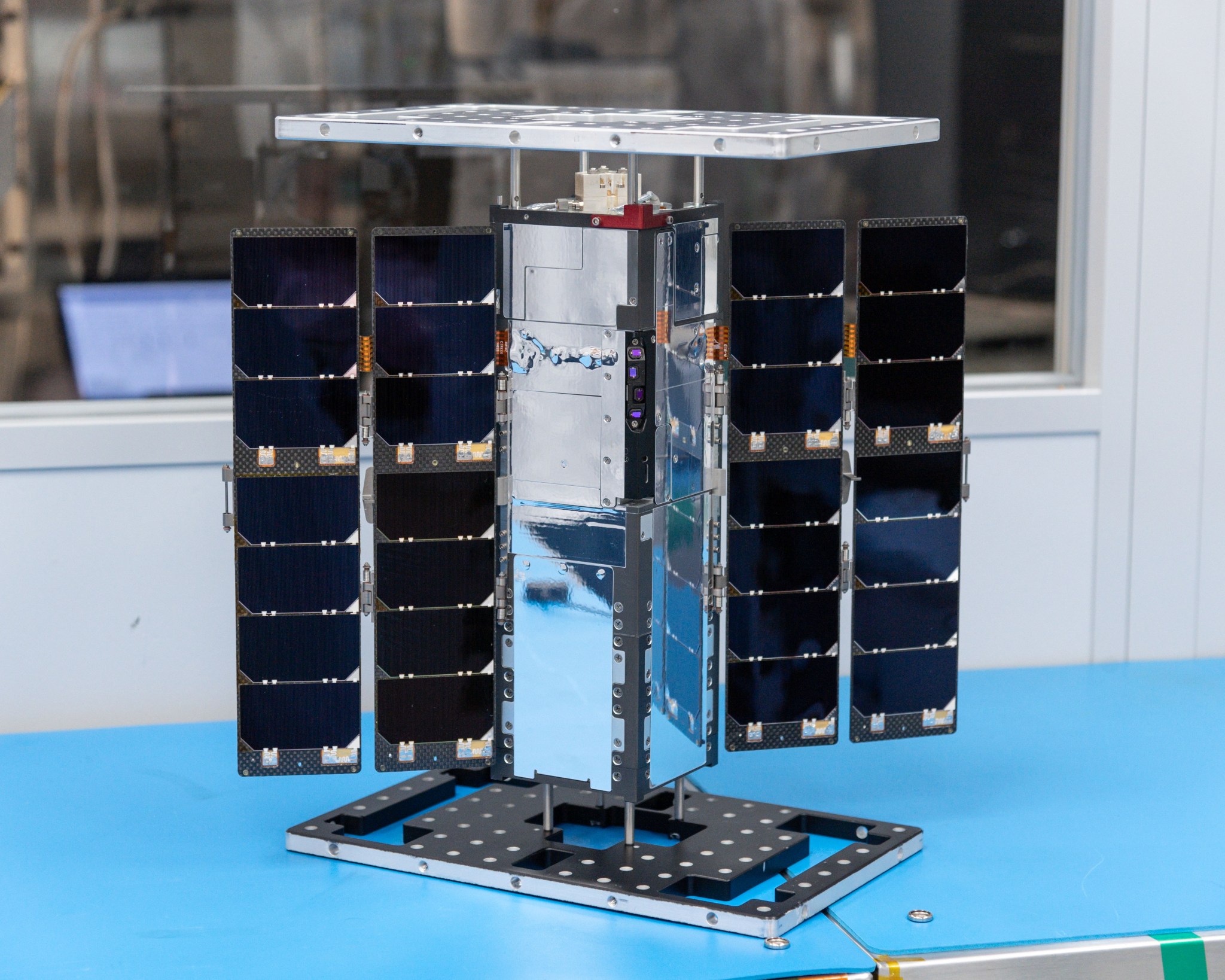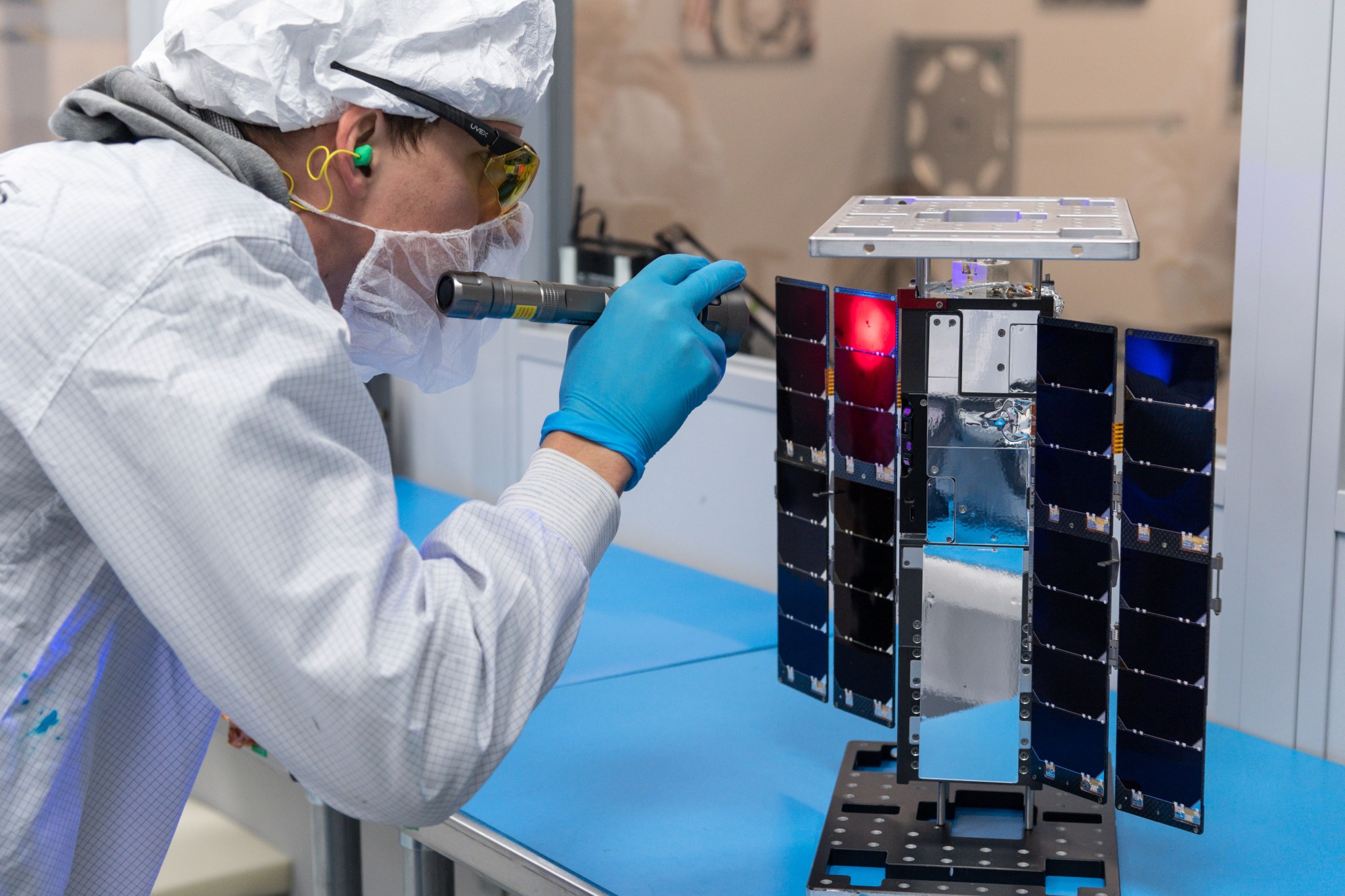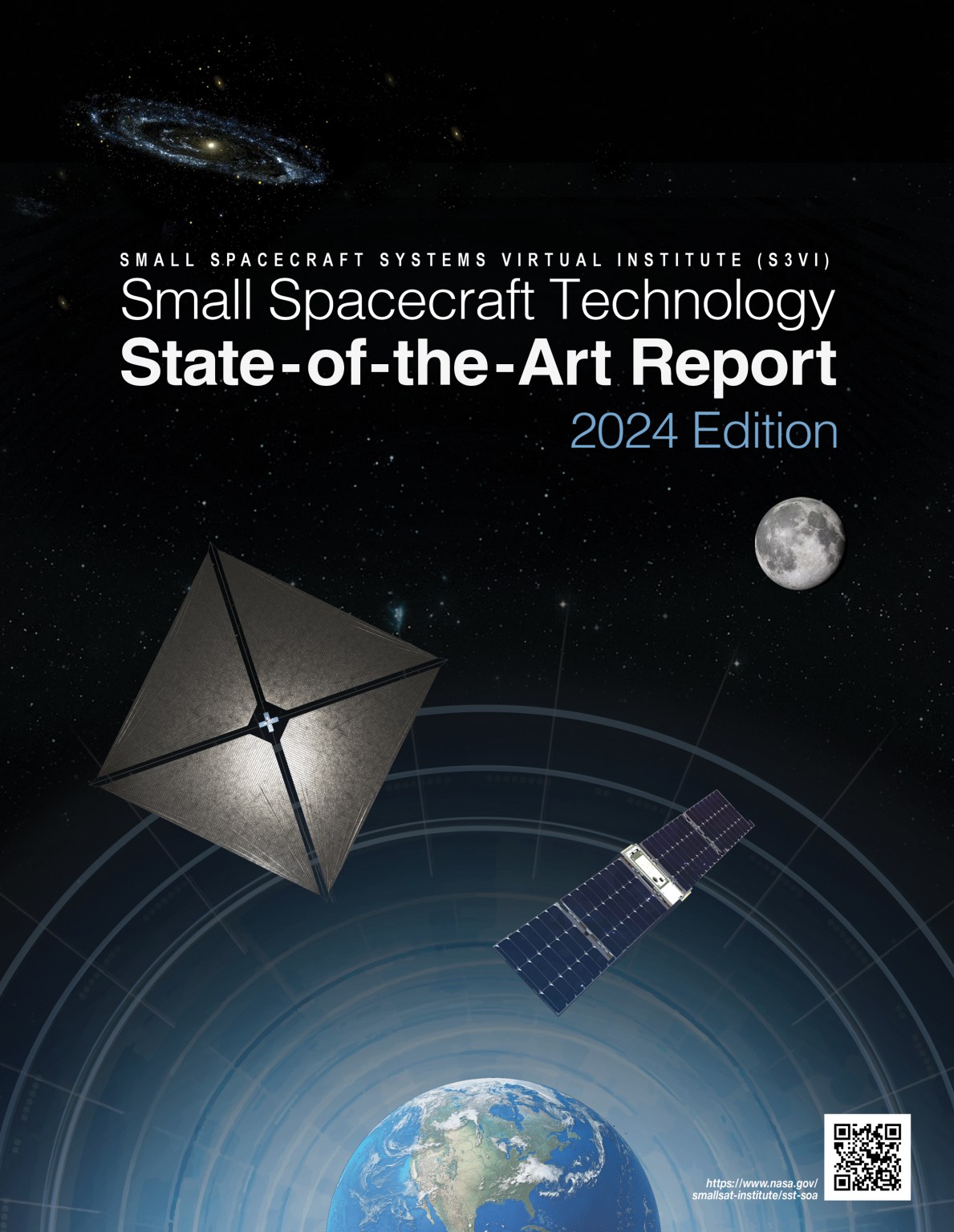CubeSat Laser Infrared CrosslinK (CLICK) mission will demonstrate technology to advance the state of the art in communications between small spacecraft as well as the capability to gauge their relative distance and location. CLICK is comprised of two sequential missions:
The first mission, CLICK A, is a risk reduction mission that will test out elements of the optical (laser) communications with a single 3-unit (3U) spacecraft. The key objective of this risk reduction testing is to demonstrate the fine steering mirror control system’s high precision pointing performance, which enables the use of a lower power laser in CLICK B/C. This will be demonstrated via communication between the spacecraft in low-Earth orbit and a portable ground station telescope. The key performance metric of CLICK A is to establish a data downlink that is greater than 10 megabits per second (Mbps) from the CLICK A spacecraft from an altitude of approximately 249 miles (400 kilometers), to a 12-inch (30-centimeter) telescope on the ground. CLICK A launched on July 14, 2022, aboard SpaceX’s 25th Commercial Resupply Service (CRS-25) mission to the International Space Station as part of the next ELaNa (Educational Launch of Nanosatellites) mission.
The goal of CLICK B/C, the second mission, is to demonstrate full-duplex (send and receive) optical communication crosslink between two 3U small spacecraft, in low-Earth-orbit, at distances between 15 and 360 miles (25 – 580 kilometers) apart at data rates greater than 20 Mbps. This second mission will also demonstrate precision ranging capability between the spacecraft that provides the ability to measure the distance and location of each with a range resolution to within approximately 20 inches (0.5 meters). CLICK B/C is planned to launch no earlier than the second quarter of 2026.
Miniaturized optical transceivers located on CLICK B/C spacecraft are capable of both transmitting and receiving laser communications and will form a communication crosslink between the two spacecraft with their alignment supported with a new fine pointing capability. The miniature optical transceivers are an improvement over radio frequency (RF) technology due to the power efficiency of laser communication at high data rates, which lessens the impact on the small platform’s already severe constraints on size, weight, and power.
Optical technology is mature for terrestrial use through fiber-optic-based systems. Transitioning optical technology to space-based platforms to create communication crosslinks between spacecraft will leverage commercially available optical components to benefit from their advantages in power efficiency and a compact form factor. The CLICK mission will use commercially available components of low-cost and low-complexity communication technology that is scalable to gigabits per second (Gbps) data rates. CLICK will transmit in the near-infrared wavelength at 1550 nanometers. CLICK B/C inherits various technologies from CLICK A with additional hardware such as a compact, low-power chip-scale atomic clock. The clock is used for precision range measurements, measuring the travel time of laser pulses. CLICK A and B/C both implement two-stage pointing. The first stage utilizes spacecraft body pointing for each spacecraft’s 1.3 milliradian wide beam, then they each use a fine steering mirror for precision pointing 70 microradian wide beams.
The CLICK technology will provide crosslink communication for small spacecraft that could enable NASA science missions that involve constellations or swarms of small spacecraft. High rate crosslinks are needed when communication nodes within small spacecraft must rapidly exchange or route significant amounts of data to other spacecraft or to the ground. Rapid exchange of observational data can enable on¬board image processing that fuses images from multiple spacecraft to look for indicators that would trigger action or additional high-priority observations. NASA science missions involving multiple small spacecraft that form a constellation or swarm may carry one or more moderate to high-resolution imaging or scientific sensors that require high date rate processing and transmission.
The Massachusetts Institute of Technology, in partnership with the University of Florida, will design and build the three miniature optical transceiver payloads to be integrated into small spacecraft procured by NASA Ames Research Center in California’s Silicon Valley.
The CLICK mission is managed and funded by the Small Spacecraft Technology (SST) program within the Space Technology Mission Directorate. The SST expands U.S. capability to execute unique missions through rapid development and in space demonstration of capabilities for small spacecraft applicable to exploration, science, and the commercial space sector. The SST will enable new mission architectures through the use of small spacecraft with goals to expand their reach to new destinations and challenging new environments.
Learn more:
- CLICK Team Tests Optical Communications Technology Ahead of Small Spacecraft Swarm Demonstration (Dec. 2021)
- NASA-Supported Advanced Laser Communications CubeSat Readies for Launch (Jul. 2022)
For more information about the SSTP, visit:
www.nasa.gov/smallspacecraft/
For more information about CLICK, please contact:
Kerri Cahoy
CLICK Principal Investigator
Massachusetts Institute of Technology
kcahoy@mit.edu
John W. Conklin
CLICK Co-Investigator
Mechanical and Aerospace Engineering
University of Florida
jwconklin@ufl.edu
David Mayer
CLICK Project Manager
Spaceflight Division
NASA Ames Research Center
David.J.Mayer@nasa.gov
Roger C. Hunter
Small Spacecraft Technology Program Manager
Space Technology Mission Directorate
NASA Ames Research Center
Roger.C.Hunter@nasa.gov
Christopher Baker
Small Spacecraft Technology Program Executive
Space Technology Mission Directorate
NASA Headquarters
Christopher.E.Baker@nasa.gov
For News Media:
Members of the news media interested in covering this topic should reach out to the NASA Ames newsroom.
Banner image: A sped up animation of CubeSat Laser Infrared CrosslinK emitting red lasers.
Credit: NASA
































